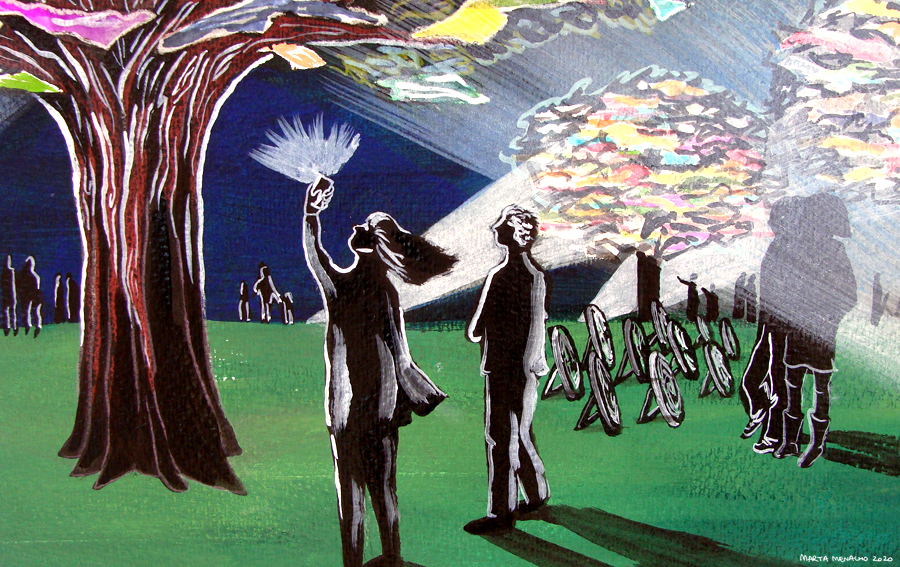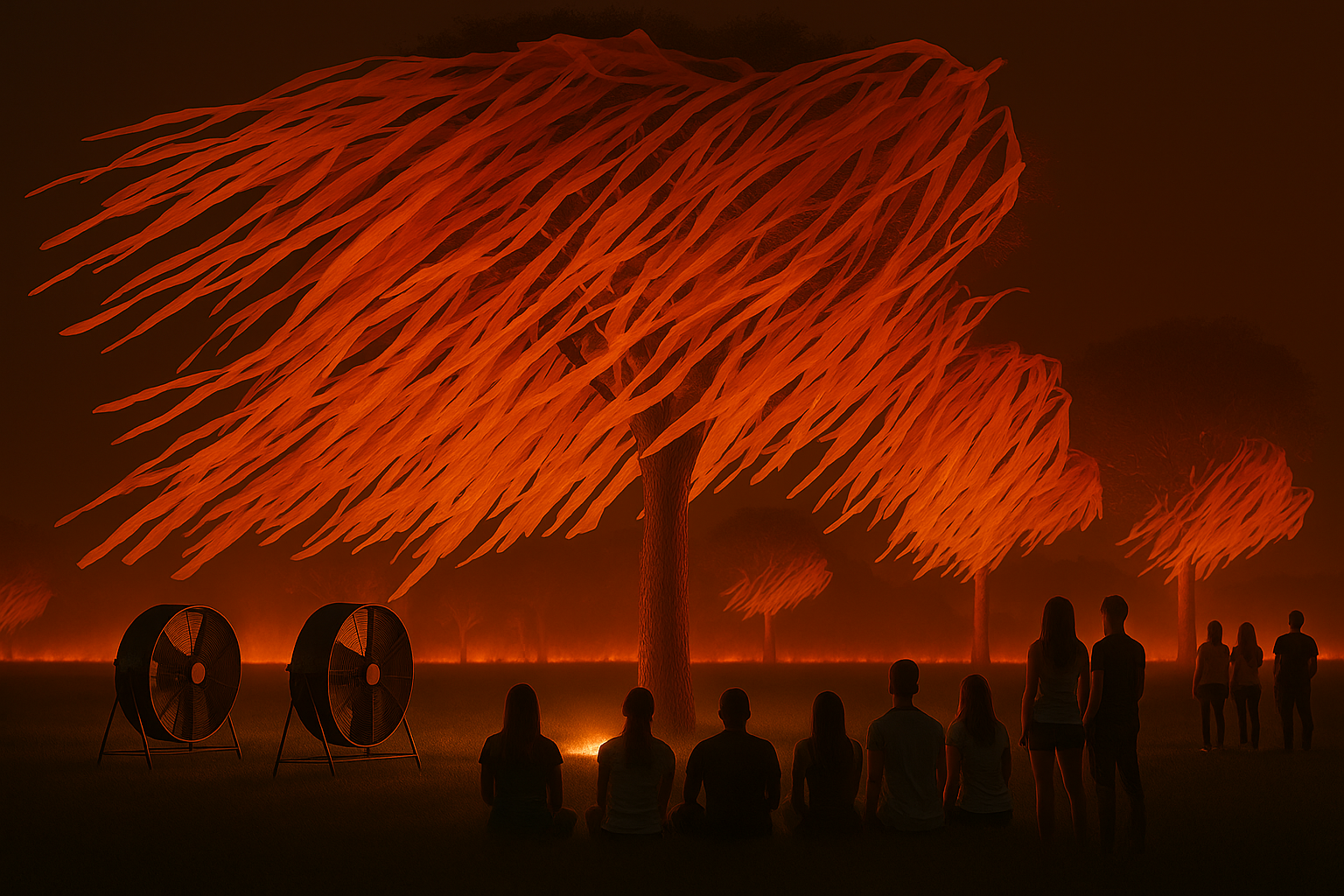Plastic Stuck in the Landscape / Plástico enganchado al paisaje


















.
It’s been a while since we swing by here and say hello, an eternity it seems.
We stayed at home, taking that necessary break, thinking and trying to be safe. We found no reasons to leave the creative quarantine during the break though.
It’s time to get back to the world although we still are in a whirlwind of emotions and aren’t yet ready to artistically shape what we are experiencing.
However, we certainly think we need to go back to issues we left off that were themselves quite concerning and are still current unfortunately. We are of course talking about plastic consumption, a recurring issue in our work.
It consumption has alarmingly gone up during these months of lockdown due to the sanitary demand for protection material, the packaging of the food that arrived home, the massive online shopping… together with a widespreade lack of recycling awareness.
The idea “Plastic Stuck in the Landscape” isn’t new. It came to us while we were traveling and visited those marginal places that form the blurry limits between the country and the city, home of the countless amount of waste trapped in there and abandoned, mostly light plastic material carried by the wind. The climate degrades it and turns into shreds that are easily carried by the air until it gets stuck in something and stays there forever.
The effect is beautifully sad and alarming above all. One cannot escape its motion and sound although it is an unhealthy unnatural scene that evinces the damage this plastic waste causes in any environment which makes scared animals flee leaving the flora wither as there are no insects to pollinate.
This piece is easy to carry out. We just need a tree or a forest, a lot of plastic waste like bags, tarps or large pieces collected from neighbors, some powerful fans, and lights to illuminate the trees.
The plastic will be shredded in all sizes to be tied to the branches of the trees so that, when the fans are turned on, the wind will move it all and make it sound creating a beautiful unsettling soundtrack.
We hope to make it as soon as everything gets normally new and we can safely return to our activity in public places so everybody can join us.
The illustrations were created by our dear Marta Menacho.
…..
Note: We have updated our piece in a more dramatic way to make it artistically clear and understandable that the fires devouring Spain and the world are here to stay. We also echo another piece of bad news: negotiations on the global plastics treaty have been suspended without reaching consensus.
The link between both facts is evident: the uncontrolled consumption of plastics, produced from fossil fuels, releases enormous amounts of greenhouse gases at every stage —extraction, production, transport, and disposal. All that CO₂ and methane fuels climate change, and in turn it multiplies fires, destruction, and the loss of what sustains us.
And while the fire spreads, governments still fail to agree on something as basic as regulating the use of plastics. The result: more heat, more fires, more devastation.
We feel the need to speak about all this, and our work in public space is the way we know best to do so.
………………………………………………..
Mucho tiempo desde que no pasábamos por aquí, tanto que parece una eternidad.
Estuvimos en casa, haciendo esa pausa necesaria, pensando e intentando cuidarnos. Durante el parón, no encontramos motivos suficientes para salir de la cuarentena creativa.
Es momento de volver al mundo, pero seguimos subidos a una montaña rusa de emociones, y no nos encontramos aun preparados para dar forma artística a lo que estamos viviendo.
Lo que sí nos parece necesario, es retomar lo que dejamos pendiente, cuestiones que ya eran muy preocupantes, y que desgraciadamente no han perdido un ápice de vigencia. Nos estamos refiriendo, por supuesto, al consumo de plástico, uno de los temas recurrentes de nuestro trabajo.
Y es que en estos meses de confinamiento, ha aumentado alarmantemente su consumo, debido a las necesidades sanitarias de material de protección de un solo uso, del envasado de alimentos que nos ha llegado a casa, las masivas compras online… junto a cierto grado de despreocupación generalizada por el reciclaje.
La idea “Plástico enganchado al paisaje” no es nueva, se nos ocurrió cuando viajábamos y nos encontrábamos en escenarios marginales, esas fronteras difusas entre lo rural y lo urbano en las que acaban varados miles de deshechos de los que nadie se ocupa, especialmente material plástico ligero, transportado por el viento. La climatología se encarga de degradarlo y acaba convertido en jirones que el aire transporta con facilidad, hasta que encuentra un obstáculo, y allí se queda, enganchado para la eternidad.
El efecto es tristemente bello, pero sobre todo alarmante. Uno no puede sustraerse a su movimiento y su sonido, pero en realidad se trata de una escena anómala e insalubre, ya que pone en evidencia el mal que esta basura plástica causa en un entorno, en el que los animales han desaparecido asustados y con ellos la flora, que se empobrece hasta morir, al no haber insectos polinizando.
La pieza es sencilla de llevar a cabo, se necesita: un árbol o un bosque, gran cantidad de material plástico, tipo bolsas, lonas, o grandes piezas, recolectadas del uso de los vecinos, varios ventiladores potentes y focos que iluminen los arboles.
El plástico se cortarán en tiras de todos los tamaños que se atarán a las ramas de los árboles y cuando los ventiladores funcionen, el viento lo moverá y hará sonar, generando una banda sonora bella y escalofriante.
Esperamos poder llevar a cabo esta idea en un futuro próximo, cuando todo sea ya normalmente nuevo y podamos retomar con seguridad nuestra actividad en el espacio público, junto a todos a que nos acompañen.
Las ilustraciones son de nuestra querida Marta Menacho.
……..
Nota. Hemos actualizado nuestra pieza de manera más dramática para visualizar, de forma artística y entendible, que los incendios que devoran España y el mundo han venido para quedarse. También para hacernos eco de otra mala noticia: se suspenden las negociaciones sobre el tratado de los plásticos sin alcanzar un consenso.
El vínculo entre ambos hechos es evidente: el consumo descontrolado de plásticos, fabricados a partir de combustibles fósiles, libera enormes cantidades de gases de efecto invernadero en cada etapa —extracción, producción, transporte y desecho—. Todo ese CO₂ y metano alimenta el cambio climático, y este multiplica los incendios, la destrucción y la pérdida de lo que nos sostiene.
Y mientras el fuego arrasa, los gobiernos siguen sin ponerse de acuerdo para legislar sobre algo tan básico como limitar los usos del plástico. El resultado: más calor, más incendios, más devastación.
Tenemos la necesidad de hablar de todo esto, y nuestro trabajo en el espacio público es la manera que mejor se nos da para hacerlo.
.









